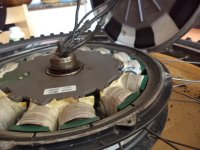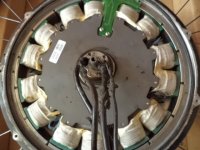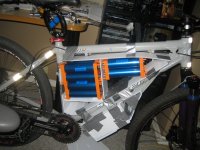Ohbse
10 kW
I'll grab a snap of the torque arms when I get home. Hose clamps aren't perfect, but they certainly work and I'm not worried about the motor falling off. I wouldn't be stressed about condensation in the motor, just don't ride through slush that's up to the axle. I would be concerned that you're not going to get the power/range you need from Headway's in those sorts of temperatures. Capacity drops WAY off.
Heating the controller is probably not required as long as you're starting your journey with the bike at a livable temperature and it never gets cold soaked. Otherwise I suspect you could have issues with capacitors if the internals actually reached -30 degrees. So far as I'm aware there's no electrical reason that a very cold motor wouldn't work fine. However you might experience issues with bearings, electrical insulation on wires, adhesives on the magnets. Just in general it seems pretty damn crazy to ride in -30, especially on something that could very well leave you stranded.
There's no way I would be running those cells with no BMS.
Heating the controller is probably not required as long as you're starting your journey with the bike at a livable temperature and it never gets cold soaked. Otherwise I suspect you could have issues with capacitors if the internals actually reached -30 degrees. So far as I'm aware there's no electrical reason that a very cold motor wouldn't work fine. However you might experience issues with bearings, electrical insulation on wires, adhesives on the magnets. Just in general it seems pretty damn crazy to ride in -30, especially on something that could very well leave you stranded.
There's no way I would be running those cells with no BMS.








